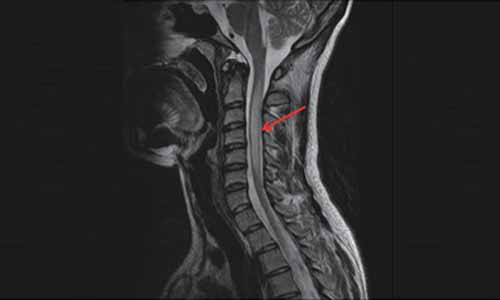- Home
- Editorial
- News
- Practice Guidelines
- Anesthesiology Guidelines
- Cancer Guidelines
- Cardiac Sciences Guidelines
- Critical Care Guidelines
- Dentistry Guidelines
- Dermatology Guidelines
- Diabetes and Endo Guidelines
- Diagnostics Guidelines
- ENT Guidelines
- Featured Practice Guidelines
- Gastroenterology Guidelines
- Geriatrics Guidelines
- Medicine Guidelines
- Nephrology Guidelines
- Neurosciences Guidelines
- Obs and Gynae Guidelines
- Ophthalmology Guidelines
- Orthopaedics Guidelines
- Paediatrics Guidelines
- Psychiatry Guidelines
- Pulmonology Guidelines
- Radiology Guidelines
- Surgery Guidelines
- Urology Guidelines
Rare case of Subacute combined degeneration induced by nitrous oxide inhalation

Dr Huimin Zhao at Department of Neurology, The Second Affiliate Hospital of Soochow University, Suzhou, China and colleagues have reported a rare case of Subacute combined degeneration caused by excessive inhalation of nitrous oxide. The case has appeared in the Journal of Case Reports.
Nitrous oxide (N2O) is used commonly for surgical procedures and as a propellant in the food industry. However, due to its euphoriant properties, N2O now is often abused for recreational purpose. Very few cases of the neurological syndrome caused by excessive inhalation of N2O have been reported.
A 28-year-old previously healthy male presented with progressive inability to walk properly and symmetrical numbness and tingling sensations in his distal extremities within nearly six days. He also complained difficulty to perform fine tasks with his hands. He felt cervicodorsal tingling sensations prior to the onset of symptoms. He had no sphincter dysfunction and other autonomic symptoms and any history of trauma or recent illness were denied. He admitted to inhaling recreational N2O in the form of small pressurised canisters for one year. His consumption of N2O was greatly increased over the last five months and approximately 800 grams (100 whippits) for once or twice a week. Ten days before the onset of the symptoms, he used 1200 g at a time. Except for a history of pneumothorax operation, no special past medical history and family history were recorded.
On examination his cognition, cranial nerve function, and muscle tone were normal. He had symmetrical distal weakness of the lower and upper limbs along with a glove and sock-like hyperpathia. He walked with a broad-based gait, and Romberg’s sign was positive. Deep tendon reflexes were normal. Position and vibration sense were impaired in both the upper and lower extremities. Babinski's sign was positive.
The results of thyroid-stimulating hormone, coagulation testing, liver and kidney function, plasma glucose, routine blood test, routine urine test, serum folate were normal. Serum vitamin B12 was low at 150.24 pg/mL (normal range = 180-914 pg/mL). Homocysteine was high at 62.9 µmol/L (normal range = 5-15 µmol/L). He underwent a magnetic resonance imaging (MRI) scan of his spinal cord, which revealed hyperintensity of the posterior cord from C1-C5 [Fig.1-4]. No abnormalities were seen on the MRI brain. Nerve conduction studies showed slowed motor conduction velocities and delayed or absent F-waves, consistent with demyelinating neuropathy. Based on the history, clinical presentation, image findings, and laboratory tests, he was diagnosed as subacute combined degeneration (SCD) caused by N2O abuse.
The patient was treated with high-dose intravenous vitamin B12 supplementation (1500 µg per day) for the first two weeks. His balance and gait improved gradually as well as the involuntary movement after treatment. With rehabilitation, he could walk independently slowly. After the discharge, the patient has continued to be treated with oral vitamin B12 supplements (500 µg three times a day). After three months, the patient’s symptoms basically returned to normal by telephone follow-up.
Journal of Case Reports
For more details click on the link: http://dx.doi.org/10.17659/01.2019.0053

Disclaimer: This site is primarily intended for healthcare professionals. Any content/information on this website does not replace the advice of medical and/or health professionals and should not be construed as medical/diagnostic advice/endorsement or prescription. Use of this site is subject to our terms of use, privacy policy, advertisement policy. © 2020 Minerva Medical Treatment Pvt Ltd